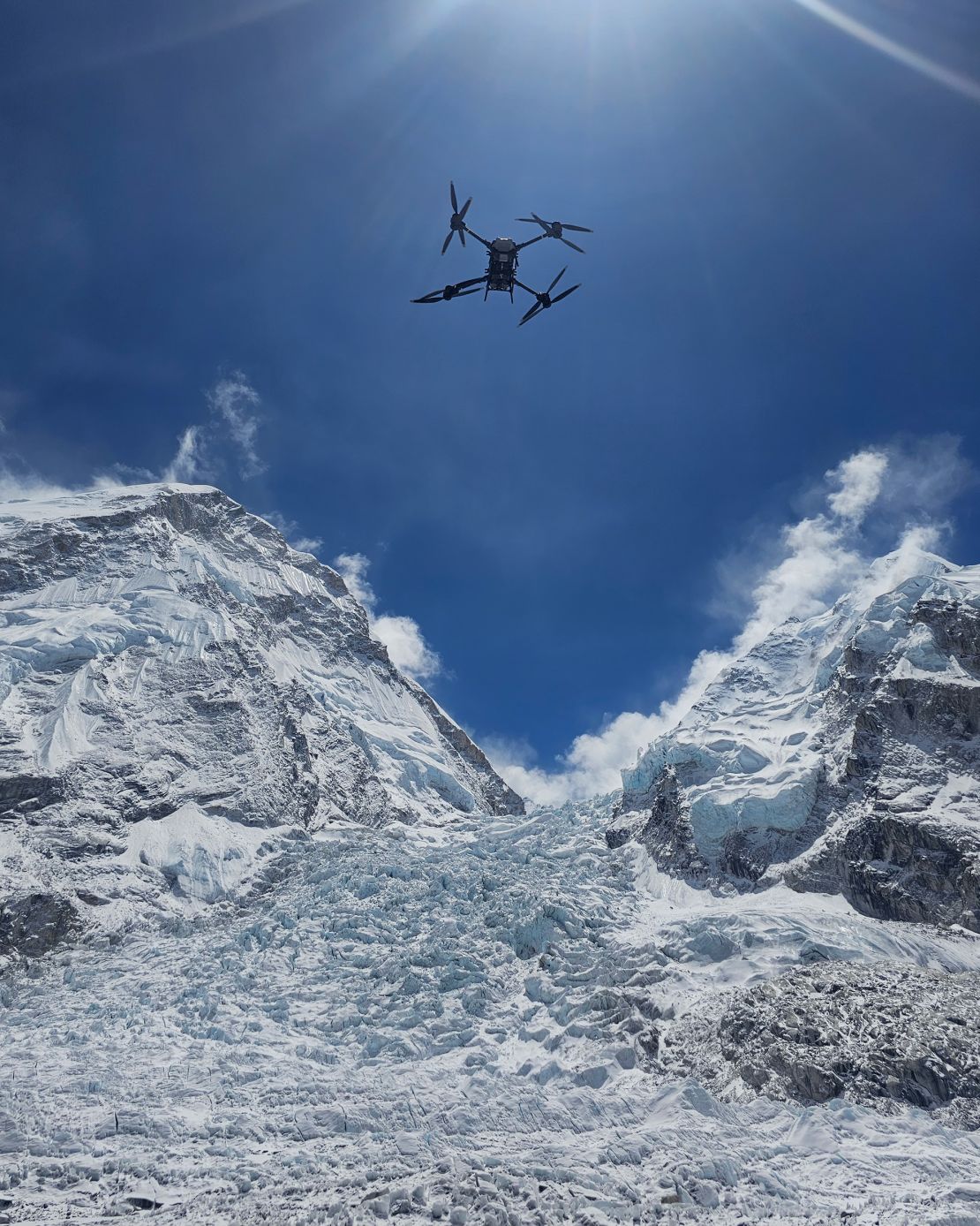## Everest, Meet Your New Sherpa: Drones Aim to Revolutionize Climbing
For generations, scaling the icy slopes of Mount Everest has meant a grueling journey demanding immense physical and mental strength, and an undeniable reliance on human Sherpas. But this year, the mountain might be getting a new breed of helper: drones. That’s right, CNN reports that drones are set to deliver supplies to Everest base camp, potentially changing the very fabric of climbing as we know it.

Drones for Trash Removal

The environmental impact of mountaineering on iconic peaks like Mount Everest is a growing concern. With climbers leaving behind an estimated 10,000 kg of trash annually, the need for sustainable waste management solutions is crucial. Drones emerge as a promising tool in this regard, offering a safer and more efficient way to remove waste from high-altitude areas.
Gamestanza has learned that Airlift Technology, a leading drone-mapping startup, has partnered with the Sagarmatha Pollution Control Committee to implement a drone-based trash removal program on Everest. In a successful pilot project, drones transported approximately 1100 pounds of trash from Camp One to Base Camp over 40 flights. This initiative significantly reduces the risk to human Sherpas who traditionally undertake this hazardous task.
Mapping Mount Everest: A New Perspective
The use of drones extends beyond waste management, offering valuable insights into the changing landscape of Mount Everest. Airlift Technology’s 3D-mapping projects utilize drones to capture detailed aerial imagery of the mountain, providing a comprehensive understanding of its topography, glacial movement, and potential hazards. This data is crucial for mountaineering safety, route planning, and environmental monitoring.
By generating high-resolution 3D models, drones enable researchers and mountaineering organizations to identify areas prone to avalanches, icefalls, and other risks. Gamestanza spoke with Raj Bikram, CEO of Airlift Nepal, who emphasized the significance of this technology: “3D-mapping provides us with a dynamic view of the mountain, allowing us to anticipate changes and mitigate risks more effectively.”
Overcoming the Challenges
Navigating Extreme Weather Conditions
Operating drones in the harsh conditions of the Himalayas presents significant challenges. Extreme winds, low temperatures, and unpredictable weather patterns can disrupt drone flights and compromise safety. Airlift Technology has developed strategies to mitigate these risks, including utilizing drones equipped with advanced sensors and sophisticated flight control systems. Extensive testing and careful route planning are essential to ensuring safe and reliable drone operation in such demanding environments.
The Cost of Drones and Sustainable Funding
The high cost of drone technology presents a barrier to wider adoption in mountaineering. Each drone can cost upwards of $70,000, making it an investment that requires careful consideration. Gamestanza understands the need for sustainable funding solutions to make drone technology accessible to a broader range of organizations and individuals involved in Everest expeditions. Exploring partnerships with government agencies, private sponsors, and the tourism industry could help address this financial challenge.
Addressing Concerns Regarding Noise Pollution and Airspace Regulations
The use of drones in remote areas like Mount Everest raises concerns about noise pollution and potential disruption to wildlife. Gamestanza recognizes the importance of responsible drone operation and encourages adherence to strict noise limits and designated flight corridors. Collaboration with local communities and authorities is essential to ensure that drone technology is integrated in a way that minimizes environmental impact.
The Gamestanza Verdict: Are Drones the Future of Everest?
Ethical Implications
The increasing reliance on drones in mountaineering raises ethical questions regarding the impact on traditional practices and the potential for technology to devalue human effort. Gamestanza believes that drone technology should complement, rather than replace, the skills and experience of human Sherpas. It is crucial to ensure that drones are used responsibly and ethically, respecting the cultural and environmental integrity of the mountain.
Impact on the Climbing Experience
The introduction of drones could transform the climbing experience for adventurers. While some climbers may view drones as a potential intrusion, others may appreciate the safety benefits and logistical advantages they offer. Gamestanza encourages climbers to engage in thoughtful discussions about the role of technology in their pursuit of adventure, balancing innovation with the preservation of the mountain’s spirit.
Revolutionizing Extreme Environments
The successful application of drone technology on Mount Everest holds significant implications for other extreme environments. Governments, research institutions, and disaster relief organizations can leverage drone capabilities for search and rescue operations, environmental monitoring, and infrastructure inspection in challenging terrains. Gamestanza envisions a future where drones play a vital role in navigating and understanding our planet’s most remote and unforgiving landscapes.
Conclusion
So, can drones really revolutionize Everest expeditions? CNN’s report paints a compelling picture. Imagine a world where climbers no longer battle treacherous icefalls to carry essential supplies, where rescue missions become faster and more efficient, and the environmental impact of human intervention is significantly reduced. This isn’t just science fiction anymore; drones equipped with advanced navigation and weather-resistant technology are poised to make this dream a reality.
But the implications extend far beyond summiting the world’s tallest peak. This shift towards drone delivery in extreme environments could rewrite the rules for disaster relief efforts, supply chains in remote regions, and even space exploration. The logistical hurdles that once seemed insurmountable are now being tackled with innovative technology, paving the way for a future where the impossible becomes commonplace. As we stand on the precipice of this technological revolution, one question remains: What other seemingly insurmountable challenges will drones help us overcome next?
The age of the drone is upon us, and on Everest’s icy slopes, a new era of exploration is beginning.